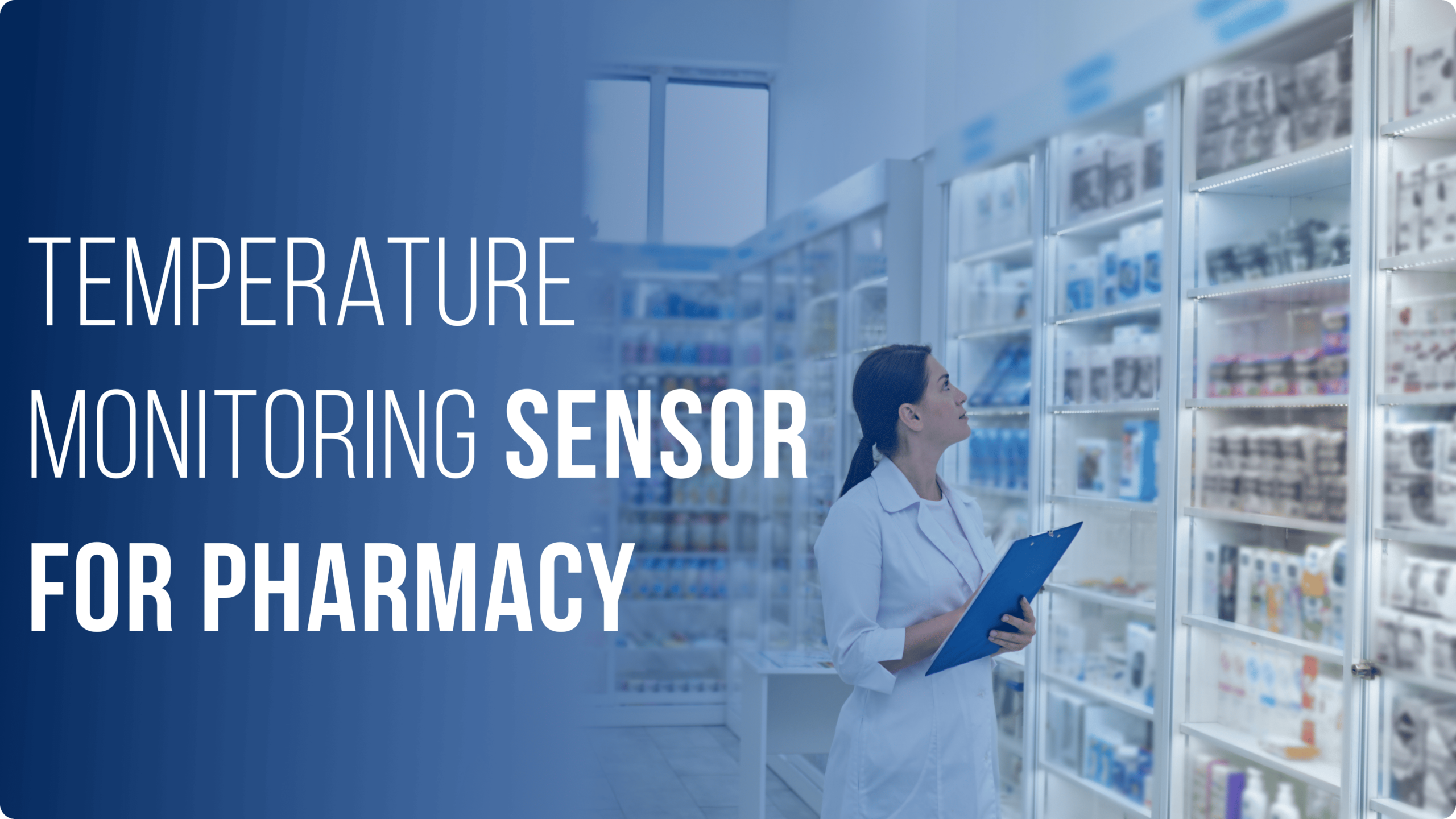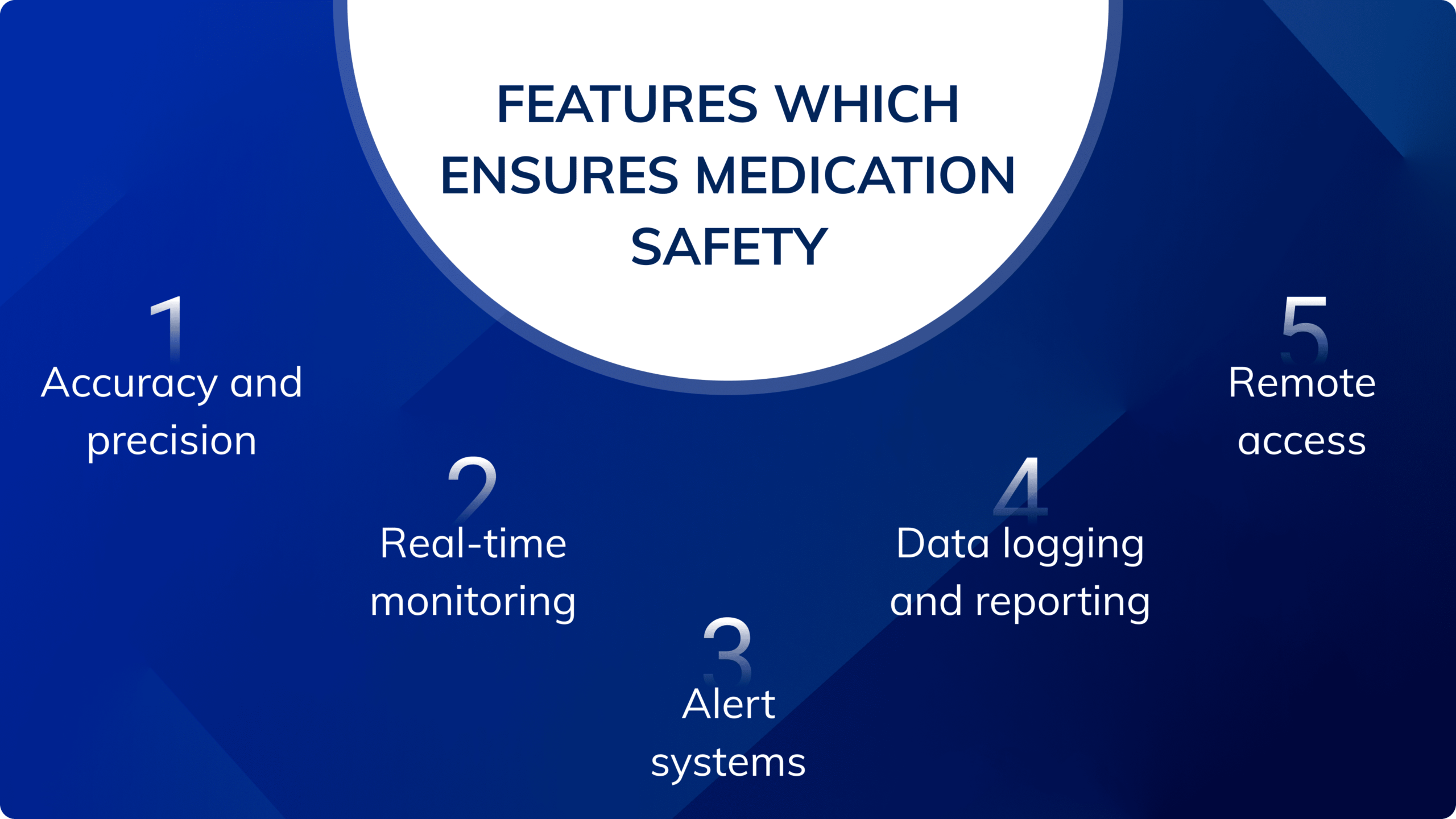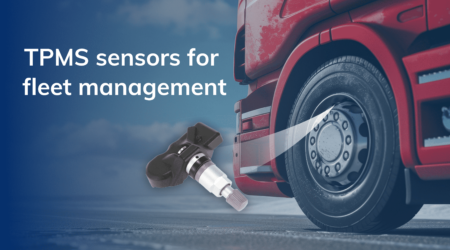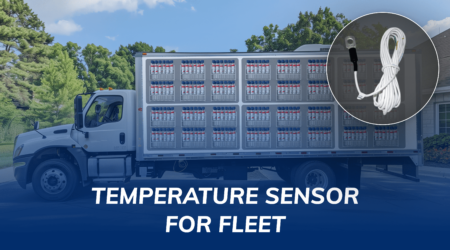How Pharmacy Temperature Sensors Ensure Medication Safety

Imagine you’re responsible for transporting sensitive medications, knowing that even a slight temperature change can compromise their quality. The pressure to maintain the right conditions throughout the journey is immense, as patient safety depends on it. But how can you be sure that the medications are kept at the right temperature every step of the way? This is where technology steps in, offering solutions that can make all the difference. In this blog, we’ll dive into the critical role of pharmacy temperature maintainance. We will be exploring how the technology can safeguard medication safety and ensure the highest standards in pharmaceutical transportation.
What is a Pharmacy Temperature Sensor?
A Pharmacy Temperature Sensor is a high-precision device engineered to monitor and record the temperature in pharmaceutical storage environments. This advanced sensor ensures that medications are stored within their required temperature ranges to maintain their quality and safety. Featuring robust hardware, these sensors provide real-time temperature data, which can be accessed remotely. They are equipped with state-of-the-art technology to alert users of any temperature deviations, ensuring prompt corrective actions. With features such as durable construction, long-lasting battery life, and easy integration with existing systems, these sensors are essential tools for maintaining optimal storage conditions in pharmacies.
Key Components and How It Works
Sensor Probe:
The sensor probe is responsible for detecting the actual temperature within the storage environment. It is crucial for detecting patterns and potential problems in storage conditions. These readings ensure medications are stored under optimal conditions, preserving their efficacy.
Advanced sensor probes, made from durable materials, can withstand various environmental factors, ensuring long-term reliability and accuracy.
Data Logger:
The data logger records temperature data over time for continuous monitoring. This component ensures that historical temperature data is available for regulatory accordance and audits. It is essential for identifying patterns and potential issues with storage conditions.
Modern data loggers often come with large storage capacities and can retain data even during power outages, ensuring no critical information is lost.
Display / Interface:
The display or interface allows users to view real-time temperature readings easily. This component provides quick access to temperature data and system status, enabling immediate actions when necessary.
Designers create user-friendly interfaces that are intuitive, featuring clear visual indicators and simple navigation, ensuring that even non-technical staff can operate the system efficiently.
Alerts and Notifications:
When temperatures deviate from the set range, the system sends alerts and notifications. Users can receive these alerts via SMS, email, or mobile app notifications, ensuring timely interventions. This feature helps prevent potential medication spoilage due to temperature differences.
Customizable alert thresholds and escalation procedures ensure that the right personnel are informed promptly, allowing for swift corrective actions.
Connectivity:
Connectivity features enable these sensors to integrate with other systems for centralized monitoring and control. Remote access to temperature data provides flexibility in managing storage conditions.
Integration with existing inventory management and compliance systems allows for seamless operations and comprehensive oversight of medication storage.
Features which ensures medication safety
1. Accuracy and Precision
High accuracy in temperature readings is essential for effective monitoring. Look for sensors with a high degree of precision to provide reliable data and maintain medication safety. Accurate temperature readings ensure medications are stored within the proper range, preventing degradation and maintaining quality. Precision is particularly important for medications with narrow temperature ranges, where even small deviations can have significant impacts on their effectiveness.
2. Real-time Monitoring
Real-time data allows for immediate action in case of temperature deviations. This prevents potential medication spoilage by enabling quick responses to maintain optimal storage conditions. Real-time monitoring provides continuous oversight, allowing pharmacy staff to address any issues as soon as they arise. This proactive approach helps prevent temperature excursions and ensures that medications remain effective.
3. Alert Systems
Advanced alert systems notify staff of temperature changes via SMS, email, or app notifications. Timely alerts allow for prompt intervention to correct temperature issues and ensure medication integrity. Setting customizable alert thresholds and escalation procedures informs the right personnel promptly, enabling swift corrective actions. This feature is particularly important in preventing spoilage and maintaining regulatory compliance.
4. Data Logging and Reporting
Detailed data logging helps in maintaining records for audits. Look for sensors that offer understandable reporting features for easy data analysis and regulatory submissions. Data logging provides a historical record of storage conditions, which is essential for demonstrating with regulatory requirements. Understandable reporting features enable pharmacy staff to analyze temperature data and identify trends or issues that need attention.
5. Remote Access
Remote monitoring capabilities let pharmacy staff access and manage temperature data from anywhere. This flexibility simplifies their management tasks and ensures they can constantly oversee storage conditions. Remote access enables them to monitor conditions even when they aren’t physically present. It also gives them peace of mind, allowing them to address any issues promptly. This feature is especially useful for pharmacies with multiple locations because it allows centralized monitoring and management of storage conditions.
Benefits of Pharmacy Temperature Sensors
1. Maintaining Medication Potency
Pharmacy temperature sensors ensure that medications, especially vaccines and biologics, are stored within their required temperature range. This prevents degradation and maintains the efficacy of temperature-sensitive drugs, ensuring that they remain effective for patient use. Medications exposed to incorrect temperatures can lose their potency, rendering them ineffective or even harmful. By maintaining optimal storage conditions, pharmacy temperature sensors help protect patient health and ensure therapeutic efficacy.
2. Regulatory Compliance
These sensors assist pharmacies in complying with strict regulations for medication storage. By providing accurate and continuous temperature monitoring, they meet regulatory standards and avoid compliance issues. Pharmacies are required to maintain detailed records of storage conditions, and temperature sensors provide the necessary data to demonstrate compliance during inspections and audits. Obeying these regulations not only avoids legal repercussions but also maintains the trust of healthcare providers and patients.
3. Preventing Financial Loss
Temperature-sensitive medications require a significant investment. Pharmacy temperature sensors safeguard this investment by preventing temperature changes that can spoil medications and cause financial losses. These sensors keep valuable medications safe and lower spoilage costs. Losing an entire batch of vaccines or biologics due to improper storage can result in huge financial losses. By keeping medications stored under optimal conditions, temperature sensors help protect profits.
4. Enhancing Patient Safety
Correct storage of medications ensures that they are effective and safe for patient use. Pharmacy temperature sensors protect patients from potential harm caused by ineffective or degraded drugs, contributing to positive health outcomes and maintaining trust in healthcare providers.
Case Studies
Case Study 1: Community Pharmacy
A community pharmacy implemented an advanced pharmacy temperature sensor system to monitor its vaccine storage. Prior to this, the pharmacy experienced frequent temperature excursions due to an outdated monitoring system. With the new sensors, there was a notable reduction in temperature-related incidents and improved following the regulatory standards. The sensors ensured that vaccines were stored at the correct temperatures, preserving their quality and protecting patient health. The pharmacy also benefited from the ability to generate detailed reports for regulatory compliance, making audits easier and less stressful.
Case Study 2: Hospital Pharmacy
A hospital pharmacy with a large inventory of temperature-sensitive medications adopted a temperature monitoring solution. This system provided real-time alerts and remote access, allowing pharmacy staff to respond swiftly to any temperature deviations. As a result, the hospital saw a marked decrease in medication spoilage and enhanced patient safety. The real-time monitoring and alert capabilities ensured that medications were consistently stored at the correct temperatures, maintaining their effectiveness. The hospital also benefited from improved workflow efficiency, as staff could manage storage conditions remotely and receive timely alerts for any issues.
Common Challenges and Solutions
Challenge 1: Calibration Issues
Regular calibration of sensors is necessary to ensure accuracy. Partner with reliable providers who offer calibration services to maintain sensor performance and ensure that temperature readings remain precise. Calibrating sensors provides accurate readings, prevents false alarms, and ensures medications are stored at the correct temperatures.
Challenge 2: Power Outages
Power outages can disrupt temperature monitoring. Investing in sensors with battery backup and data logging capabilities ensures continuous monitoring during power failures. It additionally protects medication integrity and prevents spoilage. Battery backup ensures that sensors continue to operate even during power outages, while data logging retains historical data for regulatory compliance.
Challenge 3: Integration with Existing Systems
Integrating new temperature sensors into existing systems can pose significant challenges. Choose sensors that are compatible with your current systems and look for providers that offer integration services to streamline the process and ensure seamless operation. Compatibility ensures that sensors can work with existing inventory management and compliance systems, providing comprehensive oversight of storage conditions.
Challenge 4: User Training
Further, effective use of temperature sensors requires proper training. Provide comprehensive training for pharmacy staff on the use of these sensors, ensuring they can interpret data and respond to alerts effectively to maintain optimal storage conditions. Training familiarizes staff with the sensor system, enabling them to use it effectively, prevent temperature excursions, and ensure proper medication storage.
Conclusion
Moreover, Pharmacy temperature sensors are crucial tools in ensuring the safety and efficiency of medications. By providing accurate, real-time temperature data, these sensors help maintain medication potency. It also ensures regulatory compliance, prevents financial loss, and enhances patient safety. Investing in high-quality temperature sensors and ensuring proper calibration, integration, and training can significantly improve medication storage and patient outcomes.





